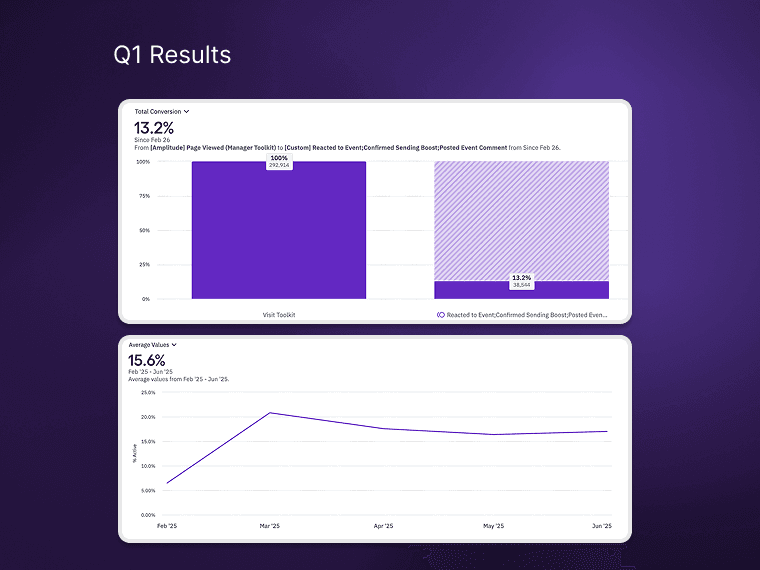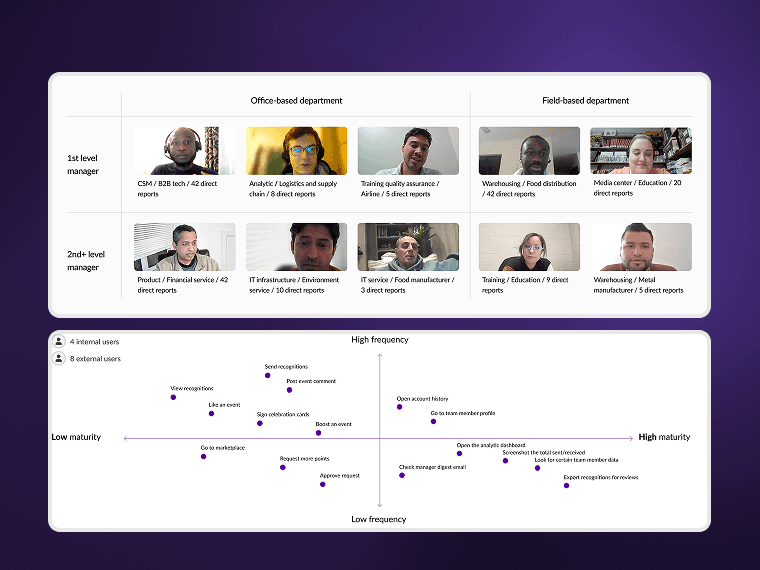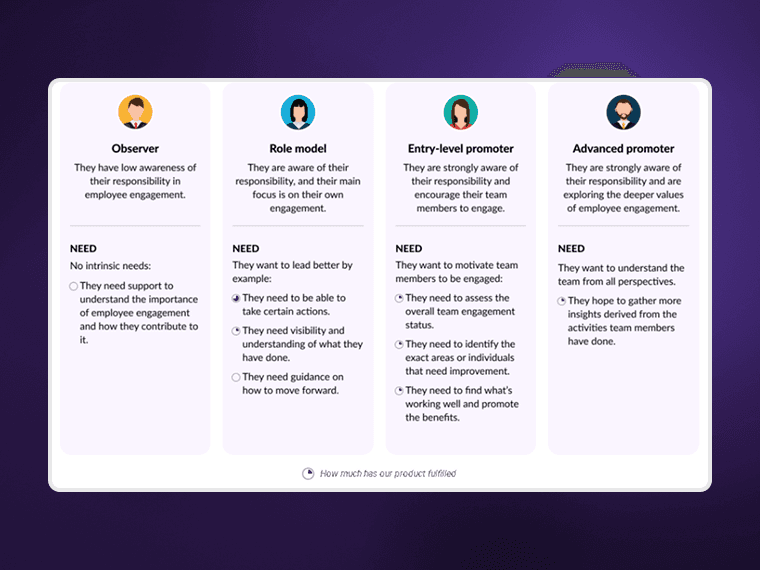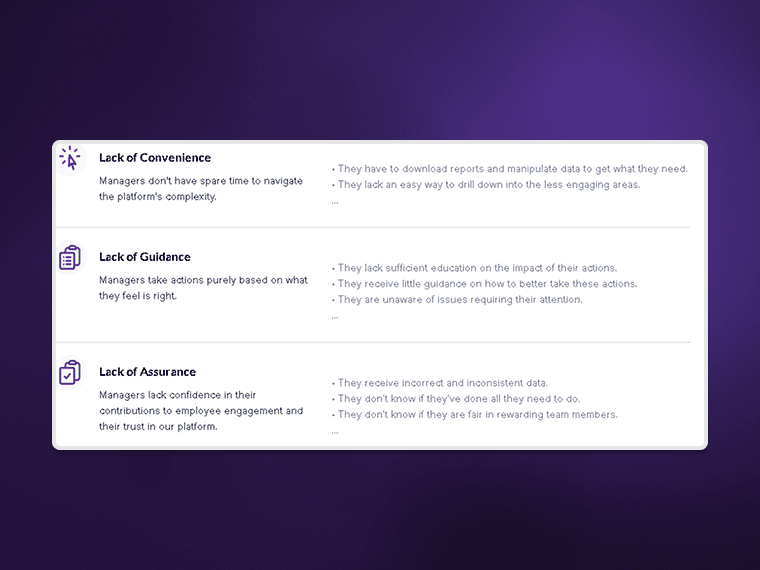I volunteered design to lead this project independently, taking accountability for both strategy and execution by defining business metrics and partnering with sales, marketing, and professional services to represent the business perspective.
Built and scaled a vision-led design frameworkadopted org-wide, replacing feature churn with a repeatable, outcome-driven processDefined a 3-phase product visionand roadmap that aligned teams on a clear path from MVP to long-term impactElevated team growth, resulting in one designer’s promotion through expanded ownership and mentorship
Managers were an underserved audience. As competitors invested in leadership tools, Achievers began losing deals. Research showed engaged managers drive 10x higher employee participation, an untapped opportunity for growth.
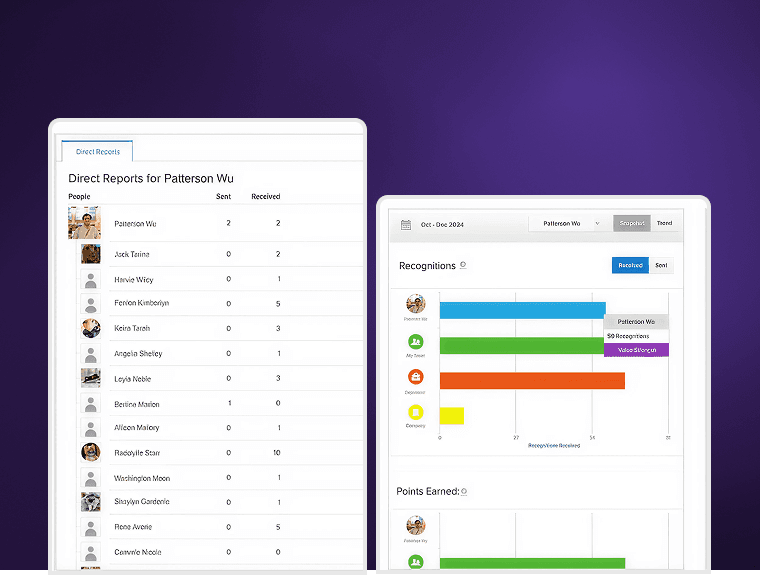
Leadership initially deprioritized the project amid competing initiatives. In a leadership call, I volunteered my team to demonstrate how design could shift from a feature-factory mindset to driving vision-led impact. This is the story of how we used this project to elevate design while solving a critical business problem.
What I did
Secured executive buy-in for design to lead a north-star initiative
Defined business outcomes and translated them into designer-level goals
Scoped clear project boundaries to focus impact
Aligned the project with the designer’s growth goals and competency development
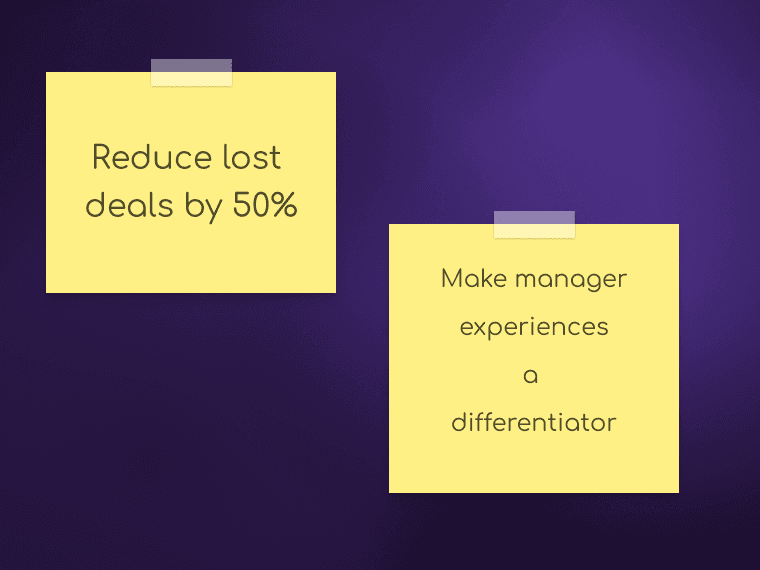
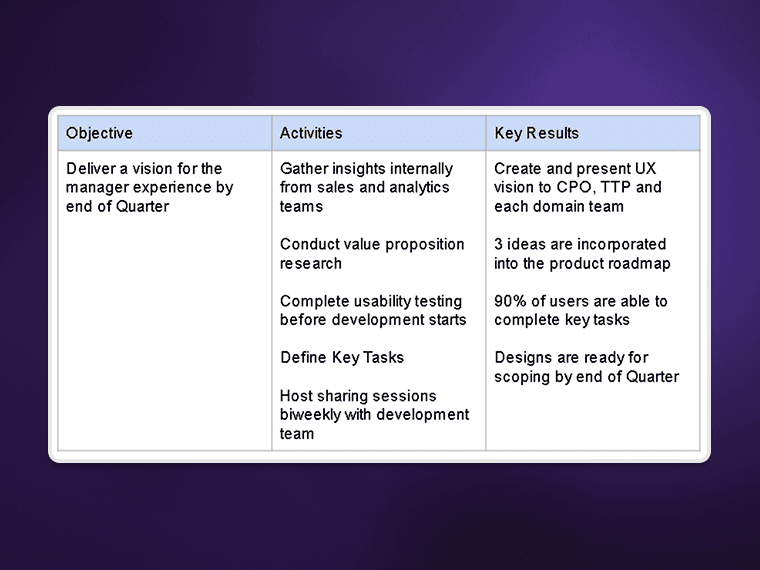
I acted as a UX manager but also represented the business as no resources were available. This was a design-led project.
I assigned an intermediate designer to lead the Manager Experience initiative. For context, this was one of several key projects within my six-person team’s portfolio.
Manager Experience: Tools to help managers recognize, engage, and support their teams
Marketplace: Our internal store where employees redeem rewards
Integrations: Extending our experience across platforms like Slack, Workday, and Microsoft Teams
Mobile: Reaching non-desk workers with core functionality
Emerging Products: Exploring new opportunities in surveys and broader HR tools
To uncover why usage was low and deals were slipping, the designer and I built a research plan combining external manager interviews with insights from sales, customer success, and analytics.
What I did
Worked with leadership to bring in business context to provide focus
Collected data from analytics, sales and customer success department
Guided who the target participants should be by developing a detailed screener
Coached designer every step of the way from discussion guides and session moderation to analysis
Research Conducted: Two research rounds with 24 users to uncover how industry, leadership maturity, and platform usage shaped engagement across competitors and our products.
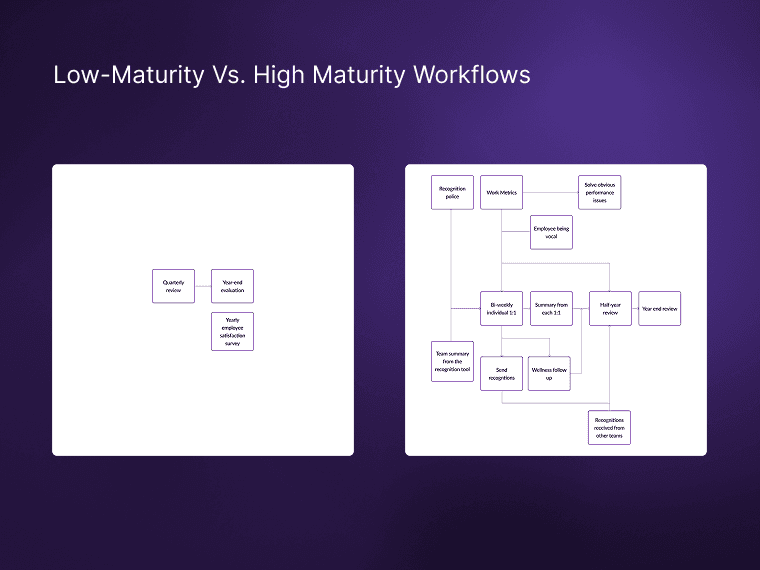
Four behavior-based manager personas emerged, each representing distinct engagement patterns and barriers.
Additionally, 3 themes emerged with our existing solution that we used to influence our direction.
I aimed for more than a roadmap. I wanted a clear strategy. We defined where to play and who to serve, focusing on the managers our competitors overlooked.
What I did
I grounded strategic decisions with business context. Since the company was under acquisition consideration, we avoided investing in 1:1 meeting experiences already well-developed by the potential buyer.
Facilitated alignment between design, product, and leadership to secure buy-in and phased investment.
Guided the creation of a design vision while still empowering the designer to tell her story
Coached and prepped the designer to present to executives
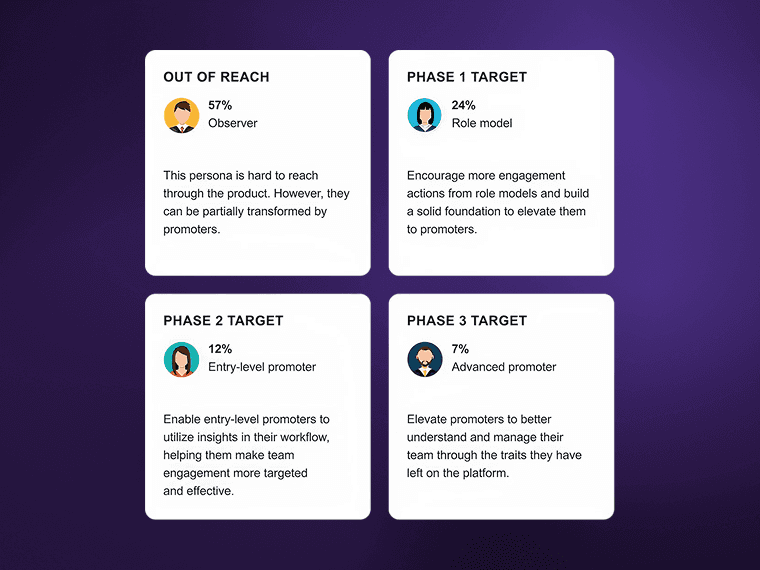
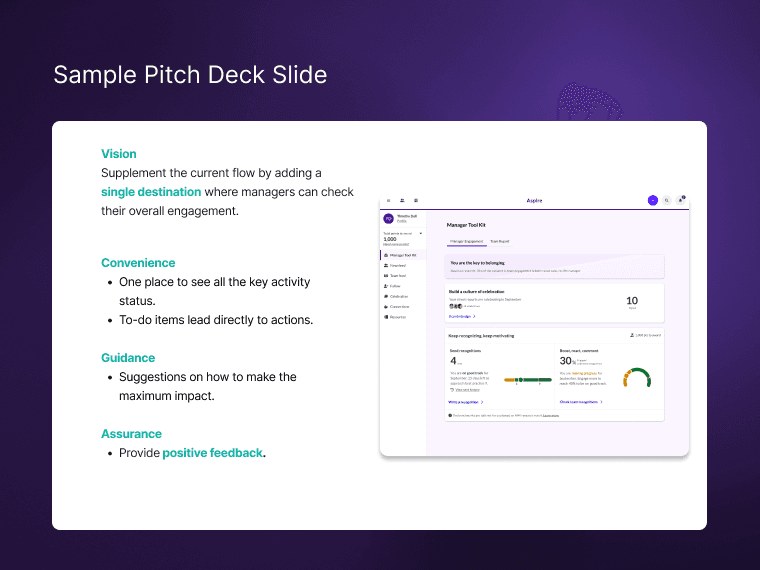
With a phased vision and executive buy-in secured, we brought in product and engineering to co-define solutions for our key ‘how might we’ opportunities.
What I Did
Structured engagement rituals with design, product management and engineering
Helped scope the work with product management, engineering
Guided the design work from concept to detailed design through design rituals, critiques and reviews
Challenge: Dealing with Engineering Conflict
When engineering challenged design scalability and layout flexibility, we aligned on project goals, identified irreversible decisions, and moved forward decisively on the rest.
What I did:
Mediated trade-off discussions
Partnered with engineering to build a larger backlog to give the team a runway
Reframed design choices in terms of development efficiency and user value
Coached designer to advocate effectively
The first design treated all activities equally, resulting in a flat list with no hierarchy or direction. I coached the team to move from a basic task list toward a structured experience that guided manager focus and action.
Core Issue of Scalability and Sequencing: As designs evolved, layout constraints surfaced. The desktop version scaled only vertically, and the card order lacked a logical flow. On mobile, this became more pronounced as users read cards sequentially without context.
Final: In the final iteration, I led the team to organize activities around a clear, intuitive narrative. We grouped them into two key themes: timing-related actions that build urgency and recognition-related actions that encourage continuous engagement.
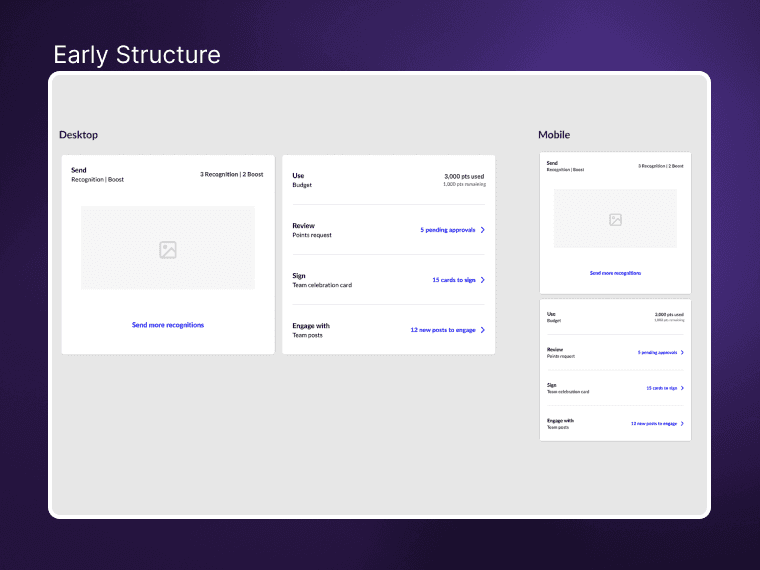
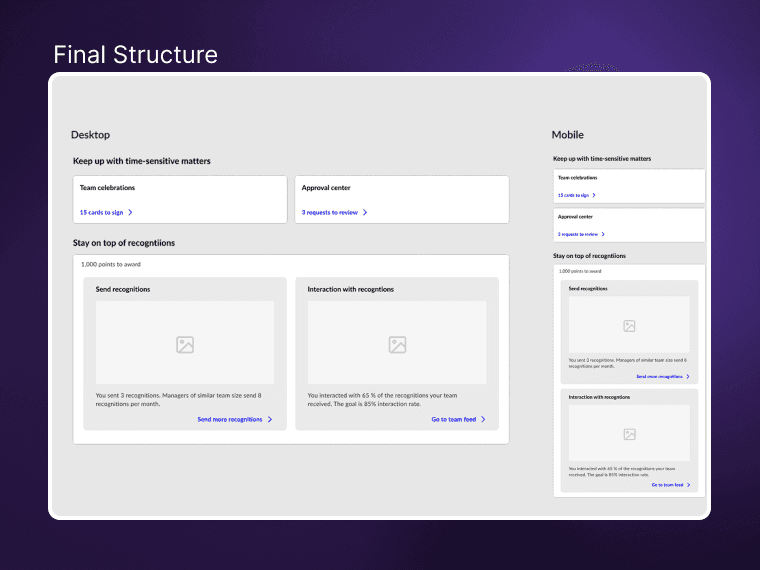
For actions that couldn’t be measured by a simple “X left to do,” we needed a more motivational way to show progress. I guided the designer to start by combining status, progress, and goal into one visual, but the result felt like a constant reminder of falling behind rather than encouragement to act.
Testing: Recognizing the emotional weight of data visualization, I emphasized testing for sentiment, not just comprehension. Through iterative testing, we learned that users valued clarity over complexity, saw green as motivating, and responded better to percentage-based progress than strict numeric divisions.
Final: In the final design, we used simple, full-range progress visuals that emphasized positive reinforcement. User feedback confirmed the shift—managers felt motivated to “get into the green zone” and stay engaged throughout the month.

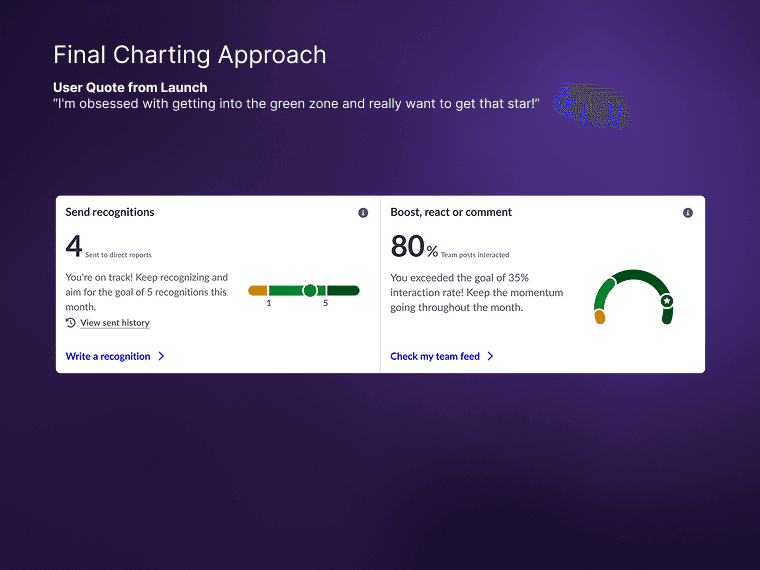
Early Iterations: During accessibility review, we discovered the chart’s color contrast didn’t fully meet WCAG Level AA standards. The challenge was finding colors that were both compliant and visually effective without compromising clarity or appeal.
Testing: Working closely with the design system and accessibility teams, I encouraged the designer to test how charts performed when colors were removed. We identified that the issue only applied when color alone conveyed meaning, so we focused on reinforcing structure and legibility through layout and text cues.
Final Design: We refined the chart by removing bold-colored text and ensuring progress was understandable without relying on color. The result passed AA compliance while maintaining a clean, visually balanced design that still felt engaging and accessible.
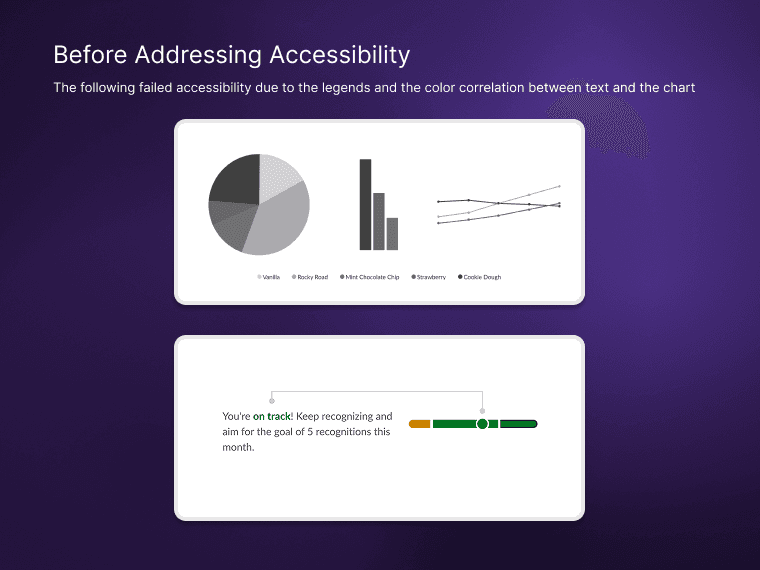
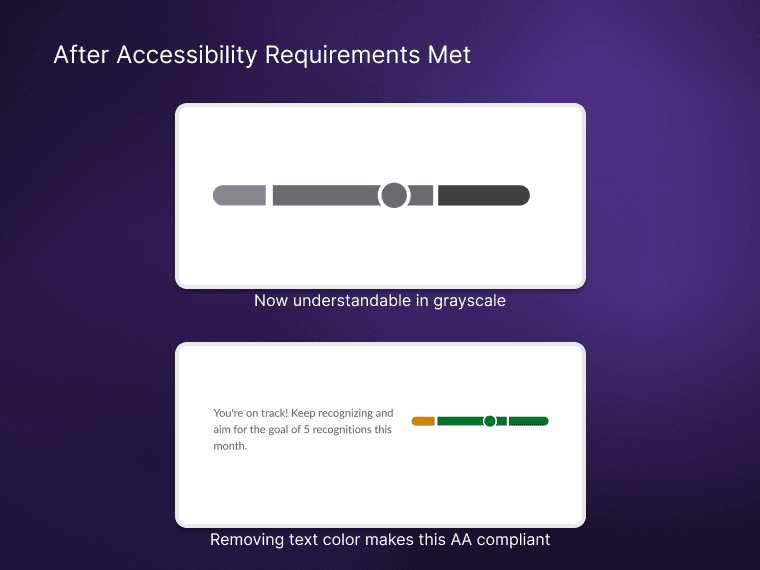
Ok ok, maybe not so secret. I’d been advocating for a new approach to how design was utilized for some time. Still, this project became the turning point. With leaders impressed by the results from both design and the broader team, the real work began by making this success repeatable across the organization.
What I did
Removed design from execution work so we could start working on forward thinking initiatives. This translated to 1 week a month.
Partnered with executives, product management and engineering to develop a roadmap of “topics” that design would research and ideate on.
Developed coaching materials to be used to level-up designers on how to be more strategic.
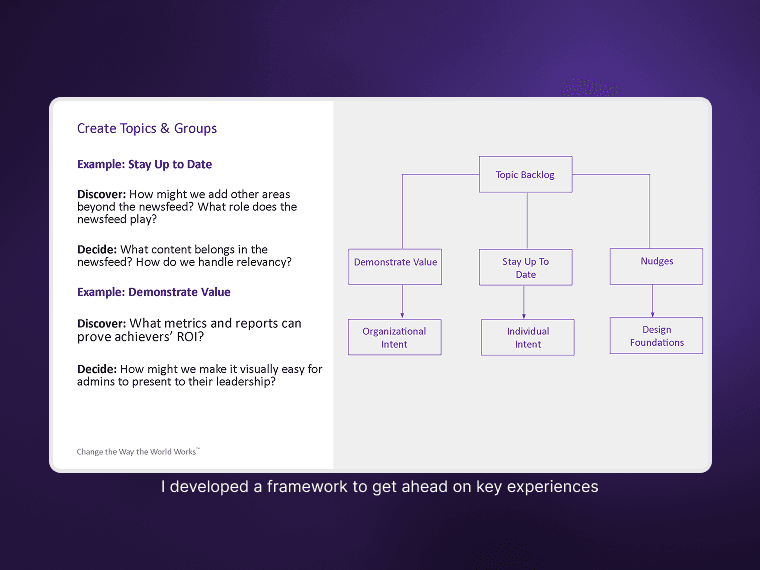
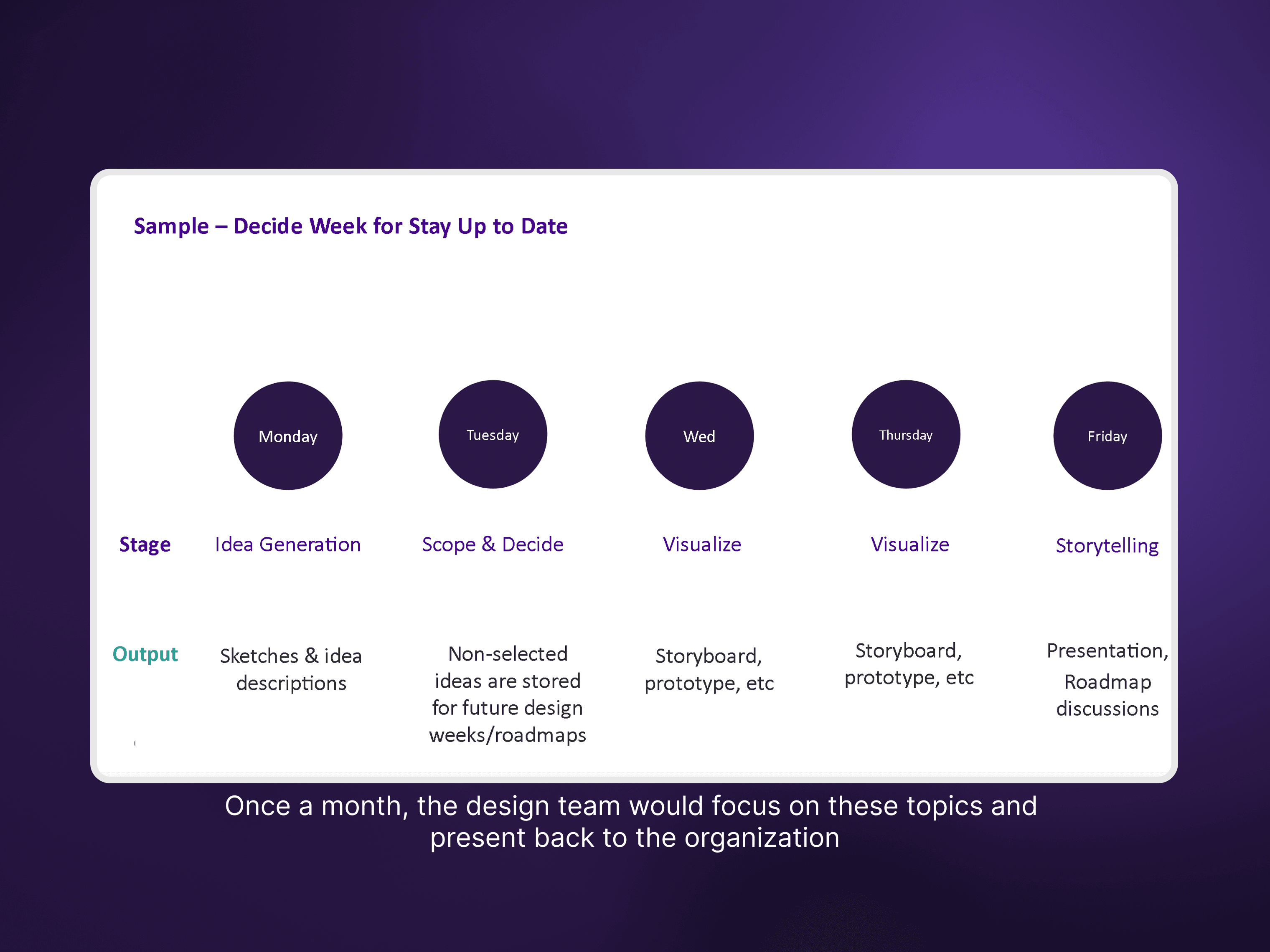
Built and scaled a vision-led design frameworkadopted org-wide, replacing feature churn with a repeatable, outcome-driven processDefined a 3-phase product visionand roadmap that aligned teams on a clear path from MVP to long-term impactElevated team growth, resulting in one designer’s promotion through expanded ownership and mentorship
